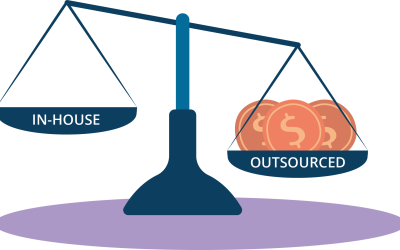Why and How Your Lab Can Support SALSA

“With strong bipartisan and bicameral support of SALSA, Congress has the opportunity to fix the flawed PAMA framework and prevent reduced access to essential testing, stifled innovation, and weakened laboratory infrastructure essential to public health preparedness. Congress must pass SALSA now.” – ACLA President, Susan Van Meter
Clinical laboratories and large laboratory organizations across the country are applauding the reintroduction of SALSA in Congress this past month. SALSA was previously introduced to aid in the reformation of PAMA that has drastically affected clinical laboratories’ ability to collect sufficient reimbursement. This has caused financial stress on both laboratories and Medicare beneficiaries and ultimately has devastated the nation’s laboratory healthcare infrastructure.
SALSA has already failed to pass in 2022, so the push to pass the act is higher than ever.
Background of the Saving Access to Laboratory Services Act (SALSA)
The Saving Access to Laboratory Services Act (S.4449/H.R. 8188) (SALSA) was introduced in 2022 to address critical shortcomings of the Protecting Access to Medicare Act (PAMA) that was passed in 2014. PAMA reformed the Clinical Laboratory Fee Schedule (CLFS) to establish market-based CLFS rates derived from private payor rates reported to the Centers for Medicare & Medicaid Services (CMS) by independent labs, hospital labs, and physician office labs. However, CMS failed to collect sufficient and fair data that accurately represents clinical laboratories across the country. Sampling was largely reported from hospital laboratories who did not report their private payor rates to CMS, resulting in the misinterpretation of fee schedules and exclusion of large segments of the clinical laboratory market.
Since PAMA was implemented, the lowest private market rates have been used in pricing Medicare part B rates, and clinical laboratories have seen 3 consecutive cuts of over 10%, totaling $3.8 billion in loss in just three years. A new round of cuts at 15% is slated for this year.
| Year for CDLT Rates | Reduction Cap |
| 2018 | 10% |
| 2019 | 10% |
| 2020 | 10% |
| 2021 | 0% |
| 2022 | 15% |
| 2023 | 15% |
| 2024 | 15% |
Reforms that SALSA Proposes
SALSA proposes major reforms to correct the path of declining Medicare market rates and to improve the representation of the beneficiaries and laboratories that PAMA fails to support. Steps towards improving the reimbursement landscape could be solved through the following changes that SALSA would implement:
- Revising the definition of “applicable information”. Two exclusions would be introduced to CMS’s definition of “applicable information” that is currently being used to determine CLFS rates. The first would be excluding Medicaid managed care rates because they are not true market rates. The second would be excluding physically mailed remittances if they do not exceed more than 10% of the laboratory’s claims.
- Changing data collection periods. SALSA would increase the length of time between data collection periods from three to four years, providing relief from reporting work for laboratories.
- Annual “guardrails” would be put in place for cuts and increases in rates. An annual limit of 5% would be set on how much a CLFS rate could cut or increase. This would provide some stability to rate fluctuations for laboratories and Medicare beneficiaries. Currently, a limit of a 15% decrease is set for 2024 to 2025, and no limits have been set in place for years after.
- More inclusive reporting and price sampling. Under SALSA, CMS would be required to collect more statistically representative data on private payor rates from more segments of laboratories and more widely available test menus rather than larger, esoteric labs and test menus. This should provide a more realistic sample representation for pricing.
How You Can Support the Passage of SALSA
SALSA was proposed as a permanent and necessary solution that has gained bipartisan support as well as support from leading clinical laboratory organizations such as the American Clinical Laboratory Association (ACLA) and the National Independent Laboratory Association (NILA).
ACLA has provided a number of resources. Now it’s your turn to take action and contribute to the effort:
Visit StopLabCuts.org (a campaign of the American Clinical Laboratory Association) and contact your representative and two senators. If you aren’t sure who they are, the system will automatically choose them for you under the “Take Action” tab. Follow up with a phone call to both your representative and your two senators and ask them to communicate to their caucus leadership that they are supporting passage of SALSA.
STAY UPDATED ON NEWS & BLOGS
Ready to grow your lab?
FOLLOW US
Discover How You Can Earn More Revenue
With Laboratory Reimbursement Experts
We help your practice or laboratory identify and implement one of a kind solutions to maximize your laboratory services revenue.
Read Our Latest Posts
How Physicians Can Reach the Full Potential of Ancillary Laboratory Services
Ancillary services play a crucial role in enhancing patient care while supporting the operational and financial health of physician practices. Among these services, ancillary diagnostic services, such as laboratory testing, are integral to timely diagnoses, effective...
UnitedHealthcare’s Z-Code Requirement for Genetic Testing Claims Impacts Laboratories and Payers
UPDATE: 10/1/2024 UHC began phase 3 of the DEX Z-codes registration. "Claims eligable for phase 3 tests with dates of service on or after Jan. 1, 2025, need to include the appropriate Z-Codes to be considered for reimbursement." Genetic and pathology laboratories are...
Laboratory Medical Billing – Decisions of Profitability
The Complex Landscape of Laboratory Medical Billing The success of a lab truly lies in the foundation of the success of it's laboratory medical billing process. Without proper reimbursement, labs can struggle to remain profitable despite quality volume and test menus....




